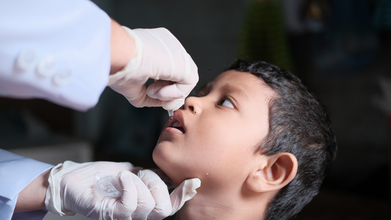- Health Conditions A-Z
- Health & Wellness
- Nutrition
- Fitness
- Health News
- Ayurveda
- Videos
- Medicine A-Z
- Parenting
- Web Stories
Justin Timberlake Reveals Lyme Disease Diagnosis: Here’s What That Means For His Health

Credits: IMDb and Canva
After wrapping up a two-year long world tour, pop icon Justin Timberlake, 44, opened up about a private health battle that’s been affecting him behind the scenes. In a heartfelt Instagram post shared on Thursday, the singer revealed that he has been diagnosed with Lyme disease, a tick-borne illness that can cause lingering and unpredictable symptoms.
The announcement came just one day after the conclusion of his tour in Istanbul, marking the end of a musical chapter that spanned more than 70 performances across North America, Europe, and South America.
Diagnosis Behind the Scenes
Timberlake disclosed that during his Forget Tomorrow World Tour, which promoted his sixth solo album Everything I Thought It Was, he had been quietly “battling some health issues.”
“When I first got the diagnosis, I was shocked for sure,” Timberlake wrote. “But at least I could understand why I would be onstage and in a massive amount of nerve pain, or just feeling crazy fatigue or sickness.”
He admitted that the symptoms forced him to reconsider continuing the tour, saying, “I was faced with a personal decision. Stop touring? I decided the joy that performing brings me far outweighs the fleeting stress my body was feeling.”
Despite the physical toll, Timberlake pushed through his JT LIVE 25 tour leg, which included festival performances like Lollapalooza Brazil, before finally wrapping things up on July 31.
What Is Lyme Disease?
Lyme disease is caused by bacteria transmitted to humans through the bite of an infected black-legged tick. It's most common in certain parts of North America and Europe, especially during the warmer months.
The most common early sign of Lyme is a red rash that often resembles a bull’s-eye, typically appearing within 3 to 30 days after the bite.
The Center for Disease Control and Prevention (CDC), US, notes that the early symptoms can also mimic the flu, fever, chills, headache, fatigue, and muscle aches. If caught early and treated with antibiotics, most people recover completely within a few weeks.
However, for some, like Timberlake, symptoms can persist or worsen even after treatment. This condition, sometimes called Post-Treatment Lyme Disease Syndrome (PTLDS), includes ongoing fatigue, nerve pain, cognitive issues, and more.
“Lyme can be incredibly tricky because its symptoms overlap with many other conditions,” explained Dr. Christopher Bazzoli, an emergency medicine expert at the Cleveland Clinic, as reported by the New York Times. “When it’s not caught early, it can lead to a wide range of complications, from joint pain to neurological issues.”
In some untreated or severe cases, complications can include:
- Chronic fatigue
- Arthritis
- Heart palpitations
- Dizziness or shortness of breath
- Nerve pain
- Memory or concentration problems
- And in rare instances, meningitis
Doctors are still researching why some people recover quickly while others experience long-term effects. For now, treatment usually includes rest, medications for symptom relief, and in some cases, extended antibiotic therapy.
Timberlake has now joined a growing list of celebrities, including Avril Lavigne and Shania Twain, who’ve opened up about their experiences with Lyme disease in hopes of raising awareness.
Takeaway For You: If you’ve spent time in wooded or grassy areas and experience unusual fatigue, joint pain, or rashes, it’s worth getting checked for Lyme. Early diagnosis can make all the difference.
A Simple Test That Could Protect You From One Of The Deadliest Cancer According To Top US Doctor

Credits: Canva
There are 3.2 million new cases of colon cancer every year, with a prediction of 1.6 million fatalities each year by 2040, reveals the World Health Organization (WHO). Colorectal cancer or colon cancer is one of the most deadly tumors in the world. Early detection and prophylactic treatment are essential because HPV is currently the second most common cause of cancer-related deaths worldwide.
Why Colonoscopy Matters
Dr. Emmanuel Aguh, who is a US-based physician, highlighted that a simple colonoscopy can actually save lives. The procedure offers direct visualization and real-time imaging of the colon and rectum, enabling doctors to identify abnormalities while they are still treatable.
Also Read: Can Wearing Tight Jeans Cause UTI? Here's What A Recent Study Reveals
“Colonoscopies may sound intimidating, but they can catch colon cancer at its earliest stage, giving patients the best chance of survival. More importantly, the test allows doctors to remove precancerous polyps before they ever turn into cancer,” Dr. Aguh explained in a recent post.
Unlike other diagnostic techniques, a colonoscopy combines detection and prevention. In addition to helping identify current problems, early excision of abnormal growths lowers future dangers.
How to overcome the fear of colonoscopy?
The thought of undergoing a colonoscopy could be scary for some people, as it could trigger anxiety. However, Dr Aguh reassured patients that the procedure is performed under sedation. It makes the process painless.
“The idea of a colonoscopy can be intimidating, but here’s the truth: the procedure itself is done under sedation. You go to sleep, and when you wake up, it’s over. Yes, there may be some temporary discomfort, but it is a small price to pay for something that could save your life,” he explained.
What Happens During a Colonoscopy?
A colonoscopy is a type of endoscopic technique used specifically to examine the large intestine, which includes the colon, rectum, and anus. In the process, an endoscope is used, which is a flexible tube with a lighted camera that is moved across the colon after being cautiously entered through the rectum.
Also Read: Polio Cases Reported In Pakistan And Nigeria, More Details Inside
The device then transmits images of the intestinal lining to a screen as it passes, allowing the clinician to detect polyps, inflammation, bleeding, or abnormal growths. If anomalies are found, the doctor can remove polyps immediately or take tissue samples for further examination.
Since a colonoscopy may detect and cure the disease in a single session, it is a useful preventive measure. Experts caution that colon cancer may develop silently and without symptoms until it reaches an advanced stage. As a result, screening is thought to be the best method of illness prevention.
What is the right time to get a colonoscopy?
Dr. Aguh recommends beginning as early as age 30, especially for those at higher risk.
You may be due for a colonoscopy if you:
- Are over 30 years old and have never had one.
- Have not undergone screening in the past 10 years.
- Had polyps or abnormal tissue removed during a previous colonoscopy.
- Have a family history of colorectal cancer.
- Carry genetic conditions that increase risk, such as Lynch syndrome.
- Suffer from inflammatory bowel disease (IBD), such as Crohn’s disease or ulcerative colitis.
Since colorectal cancer often progresses without obvious signs until it is advanced, screening becomes a crucial safeguard, even if you feel healthy.
As Dr. Aguh puts it: “It may feel uncomfortable to think about, but a colonoscopy is a short, safe procedure that can protect you from a disease that claims millions of lives every year. Don’t wait for symptoms, screening is the best step toward saving your life.”
Polio Cases Reported In Pakistan And Nigeria, More Details Inside

Credits: Canva
Thanks to the Global Polio Eradication Initiative (GPEI), the cases of polio have decreased by more than 99%, notes the World Health Organization (WHO), however, spread of wild poliovirus sill remain a threat in Afghanistan and Pakistan. In the news, polio is back again, with another country joining the link - Nigeria.
Both Pakistan and Nigeria reported three new cases of polio as per the GPEI.
Polio Cases In Pakistan
Three cases of wild poliovirus type 1 (WPV1) is reported in Sindh. The case also had first experienced paralysis in August. So far, Pakistan has reported a total of 29 polio cases this year, confirmed the National Institute of Health (NIH). Two of the bases have been reported in Singh's Badin and Thatta district, as confirmed by a press release.
In an effort to curb down the numbers, the release said that a sub-national polio vaccination campaign was also conducted across 88 districts of the country, which also included Badin and Thatta.
Polio Cases In Nigeria
Nigeria also reported three circulating variant poliovirus type 2 (cVDPV2) this week from Borno, Kebbi, and Zamfara states. The cases from May and July also reported in paralysis. This year, Nigeria reported a total of 35 cases. Nigeria is also trying to curb down the cases, here local women have stepped in to fight against polio. Aljazeera reports that women set out for a day with a cooler box, "inside are oral polio vaccines packed in ice".
While Nigeria was declared free of wild poliovirus by the WHO in 2020, the cases did not vanish fully.
What Is Polio?
The WHO notes that it is a highly infectious disease caused by a virus that invades the nervous system and can cause total paralysis in matter of hours. The virus is transmitted by person to person spread mainly through the fecal-oral route, or less frequently, by a common vehicle, which could be either from contaminated food or water. The virus also multiplies in the intestine.
NIH notes that the virus responsible for causing Polio belongs to the Picornaviridae family.
Also Read: Why 1 In 6 U.S. Parents Are Rejecting Vaccine Recommendations
Common Symptoms of Polio
The NIH notes that the maximum excretion of the virus is seen in 2 to 3 days prior and 1 week after appearance of symptoms. The spread is especially rapid in areas with poor sanitation, and among the nonimmune population. The rise in cases could be seen in summer months and temperate regions.
As per the WHO, the common Polio symptoms are:
- Fever
- Fatigue
- Headache
- Vomiting
- Stiffness of the neck a
- Pain in the limbs
The WHO also notes that 1 in 200 infections leads to intervisible paralysis, usually in legs, and among 5 to 10% of those paralysed do not survive.
Who Are Most At The Risk Of Polio?
As per the WHO, Polio mainly affects children under 5 years of age, however, it can happen to anyone of any age who is unvaccinated and may have come in contract with the disease.
Is There Any Cure For Polio?
While there is no cure for Polio, it can very well be prevented. Polio vaccines, which can be administered multiple times, can protect a child for life. There are two vaccines available:
- Oral Polio Vaccine
- Inactivated Polio Vaccines
FDA Recalls Popular Chocolate Snack Over Laceration Risk: What You Need To Know

Credits: Canva
True Fru product recall: The U.S. Food and Drug Administration (FDA) announced that Tru Fru, LLC is voluntarily recalling certain Tru Fru freeze-dried products due to the possible presence of metal. The recall was prompted by Georgia Nut Company, which manufactures these products for Tru Fru, after a customer raised concerns.
Tru Fru produces chocolate-covered fruit snacks, including freeze-dried and frozen fruits like strawberries, bananas, and pineapple, coated in dark, milk, or white chocolate, and some varieties with peanut butter.
True Fru Product Recall: How To Recognize the Recalled Items?
The FDA published the recall notice on September 29, 2025. It covers specific batches of Tru Fru Freeze-Dried Strawberries in Dark & White Chocolate and Strawberries & Crème, available at major retailers nationwide, including Albertson’s, CVS, Food Lion, H-E-B, Hungryroot, Ingles Markets, Kroger, Stew Leonard’s, and Target, as per All Recipes.
To check if your product is affected, look for the 10-digit manufacturing code on the back of the package. The first four characters of the code identify the recalled batches.
Affected Products Include:
1) Tru Fru Freeze-Dried Strawberries in Dark & White Chocolate (3.4 oz)
UPC: 850048358270 | Item #: 10300458
Manufacturing codes starting with: 517B–532B (see full list above)
2) Tru Fru Freeze-Dried Strawberries in Dark & White Chocolate (1.7 oz)
UPC: 850048358331 | Item #: 10300442
Manufacturing codes starting with: 514A–526A
3) Tru Fru Freeze-Dried Strawberries in Dark & White Chocolate (13 oz)
UPC: 850048358379 | Item #: 10300474
Manufacturing codes starting with: 515A–516C
4) Tru Fru Freeze-Dried Strawberries & Crème (3.4 oz)
UPC: 850048358249 | Item #: 10300455
Manufacturing codes starting with: 520B–524E
True Fru Product Recall: What Did The Company Say?
The company warned that hard or sharp foreign objects in their food products could cause injuries, including cuts or punctures to the mouth, tongue, throat, stomach, or intestines, as well as damage to teeth and gums. The recall affects products distributed across the U.S. at major retailers such as Albertson’s, CVS, Food Lion, H-E-B, Hungryroot, Ingles Markets, Kroger, Stew Leonard’s, and Target. The recall was prompted by a customer report, and so far, no injuries or illnesses have been reported according to the FDA.
True Fru Product Recall: What to Do If You Have A Recalled Product?
Do not eat any of the recalled items. They should be discarded immediately. Customers seeking compensation can fill out Tru Fru’s online form to receive a coupon. No injuries have been reported so far, but if you have any concerns, contact your doctor. Swallowing metal pieces can cause cuts or tears in the mouth, throat, stomach, or intestines, and can damage teeth or gums.
Tru Fru is not the only recent recall due to foreign object risks. The USDA recently issued a health alert for a ready-to-eat pasta meal sold at Walmart because of possible listeria contamination.
The recalled product is Marketside Linguine with Beef Meatballs and Marinara Sauce, sold in 2 oz plastic trays. The affected “best if used by” dates are September 22, 24, 25, 29, 30, and October 1, 2025. These were sold nationwide at Walmart. Consumers are advised not to eat the pasta and should either throw it away or return it for a full refund.
© 2024 Bennett, Coleman & Company Limited

